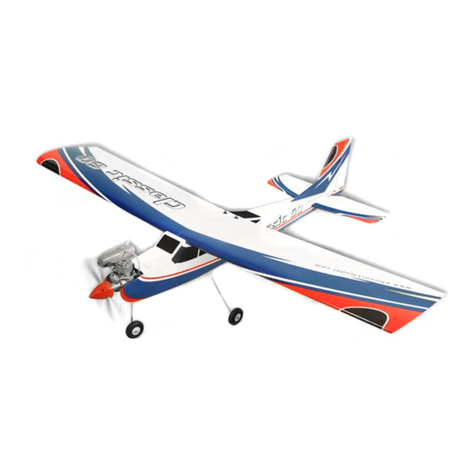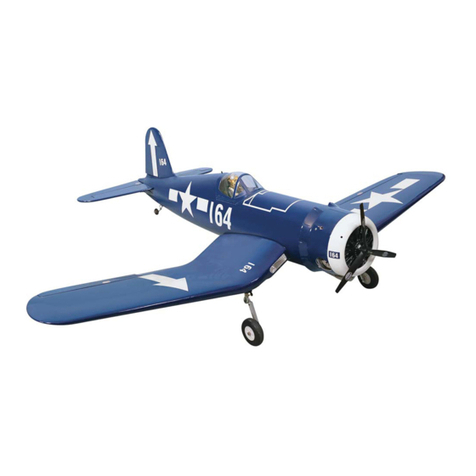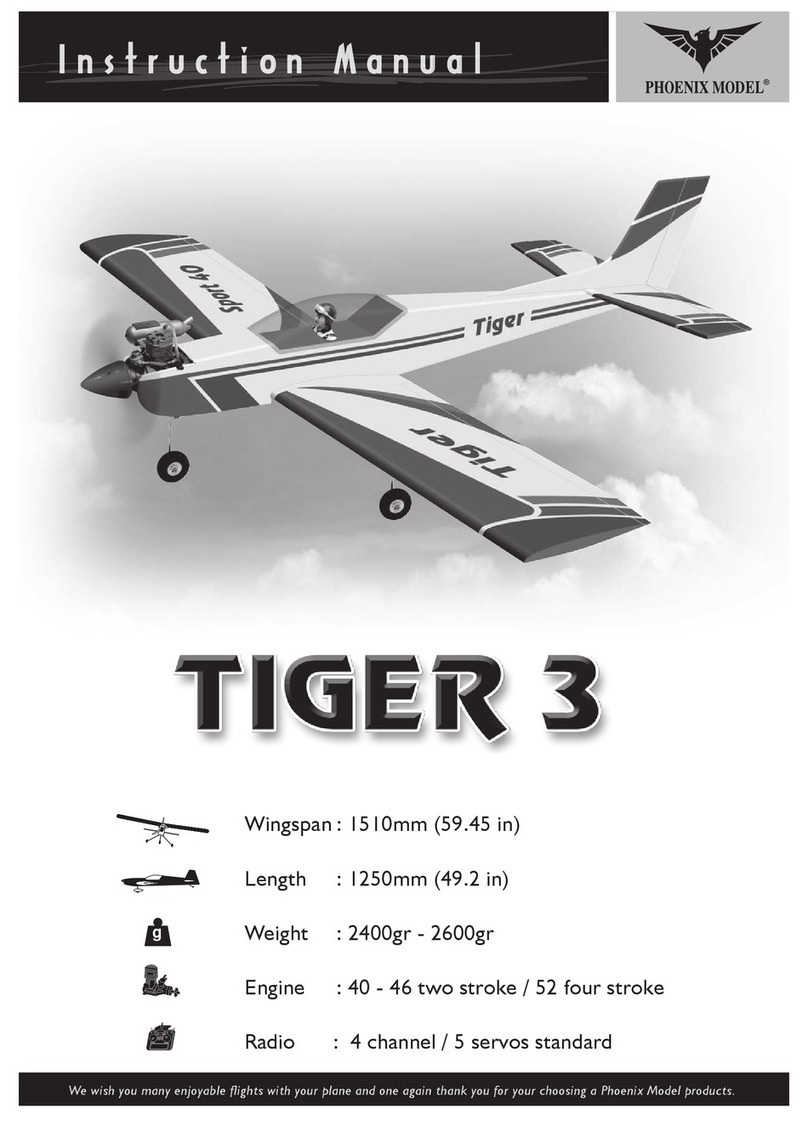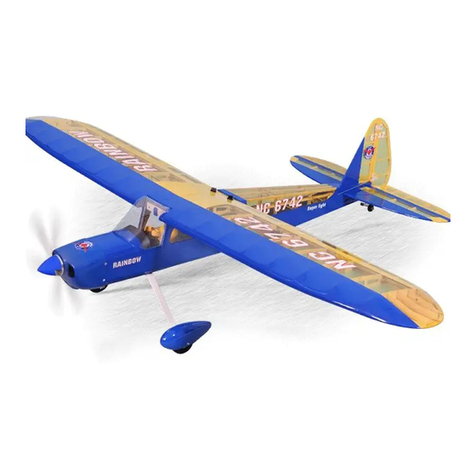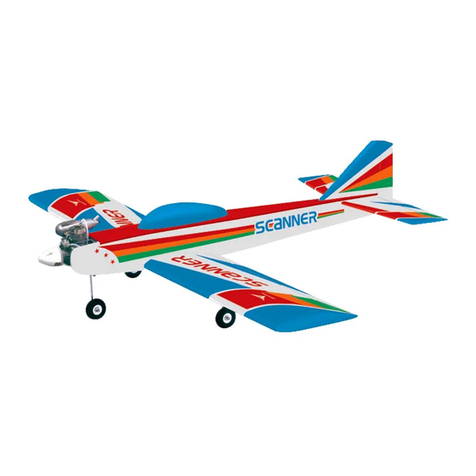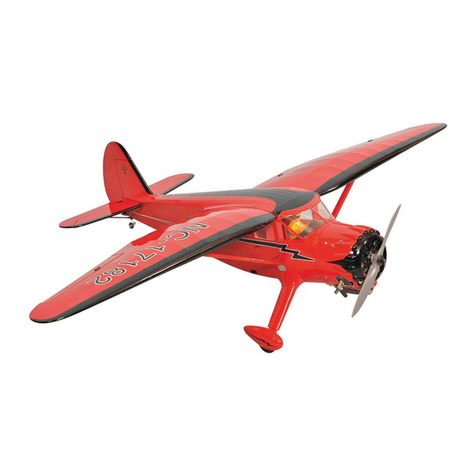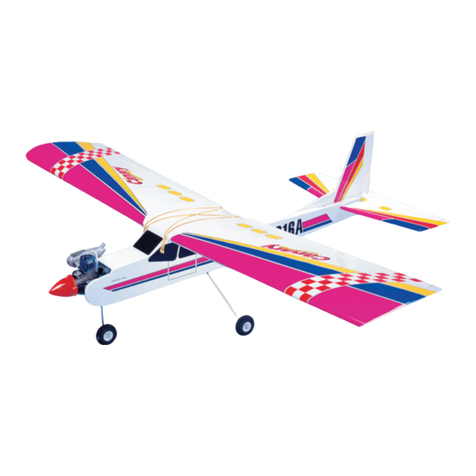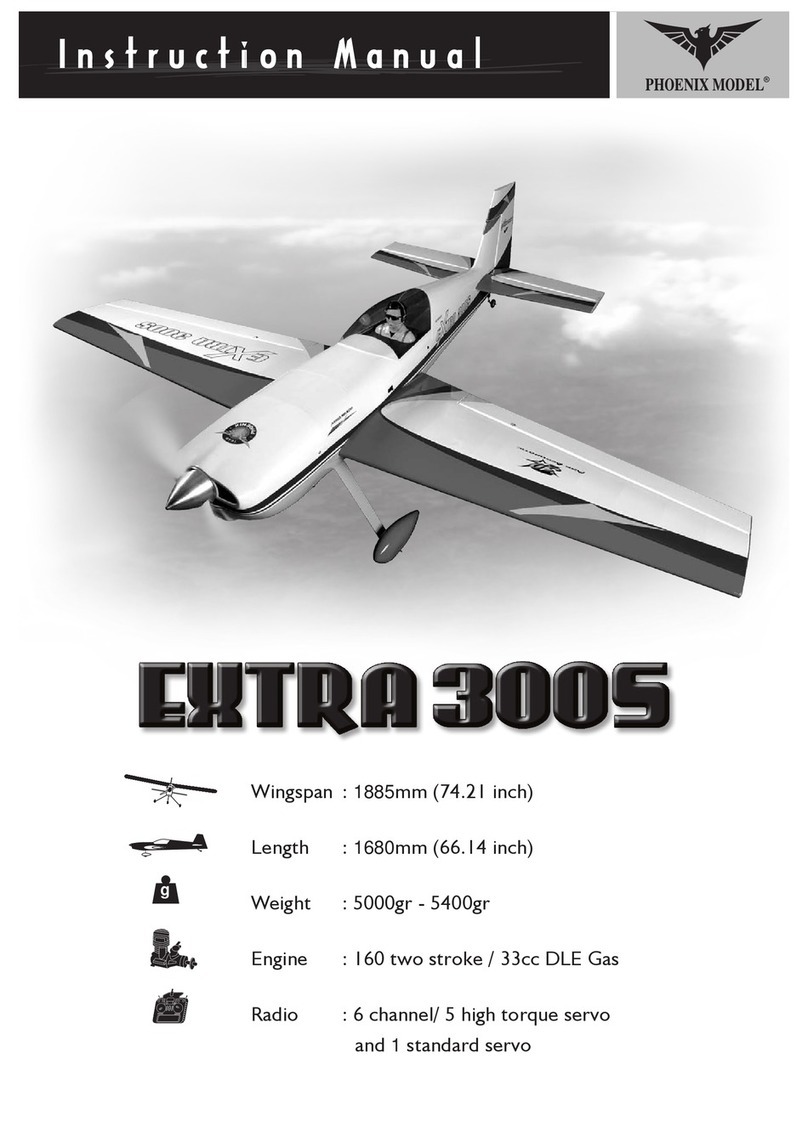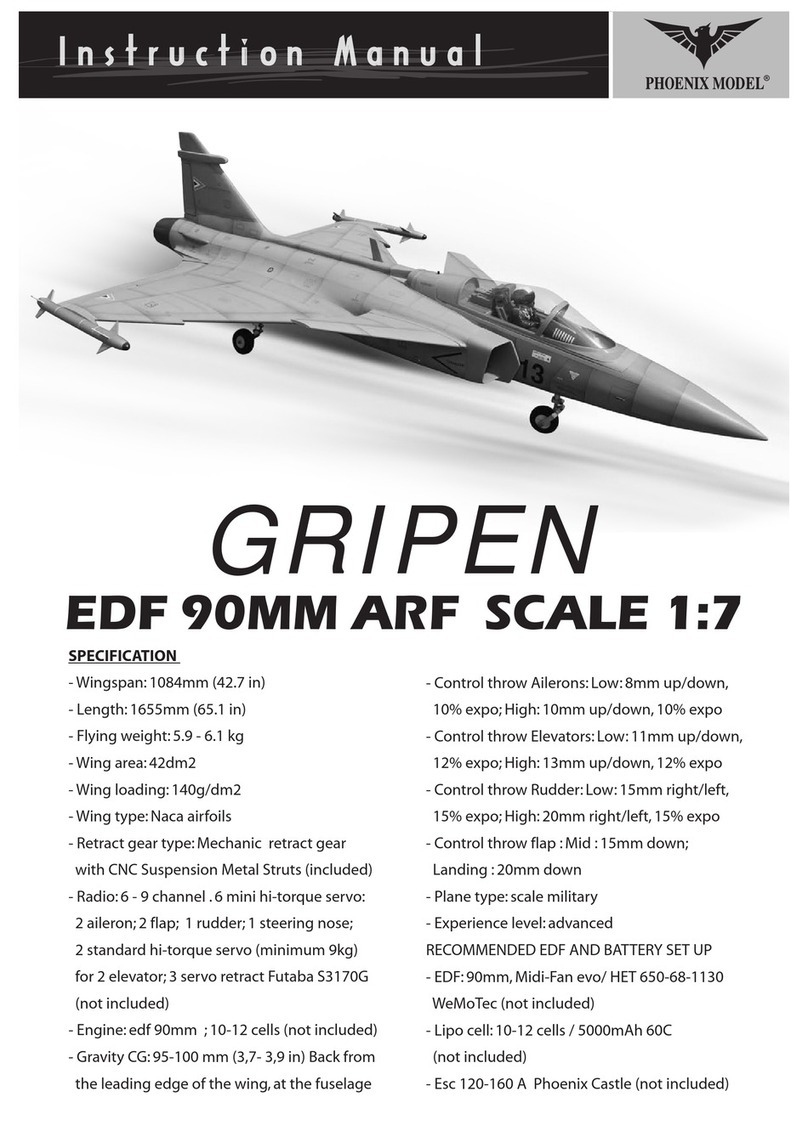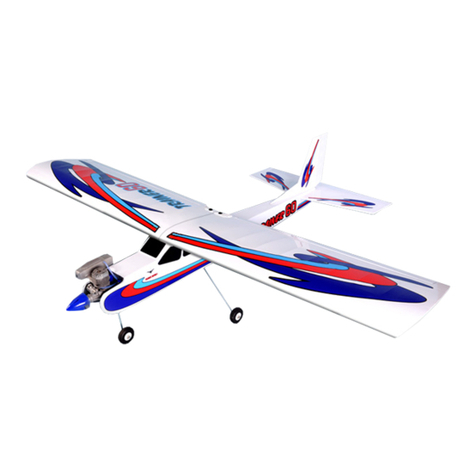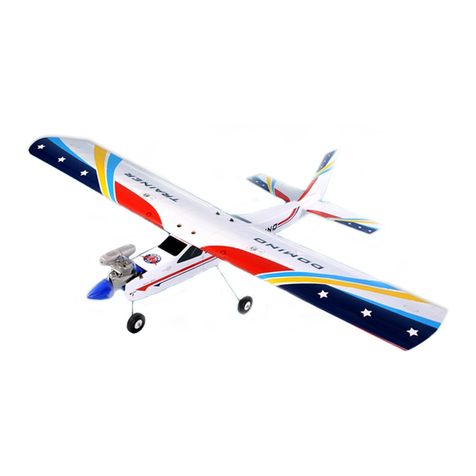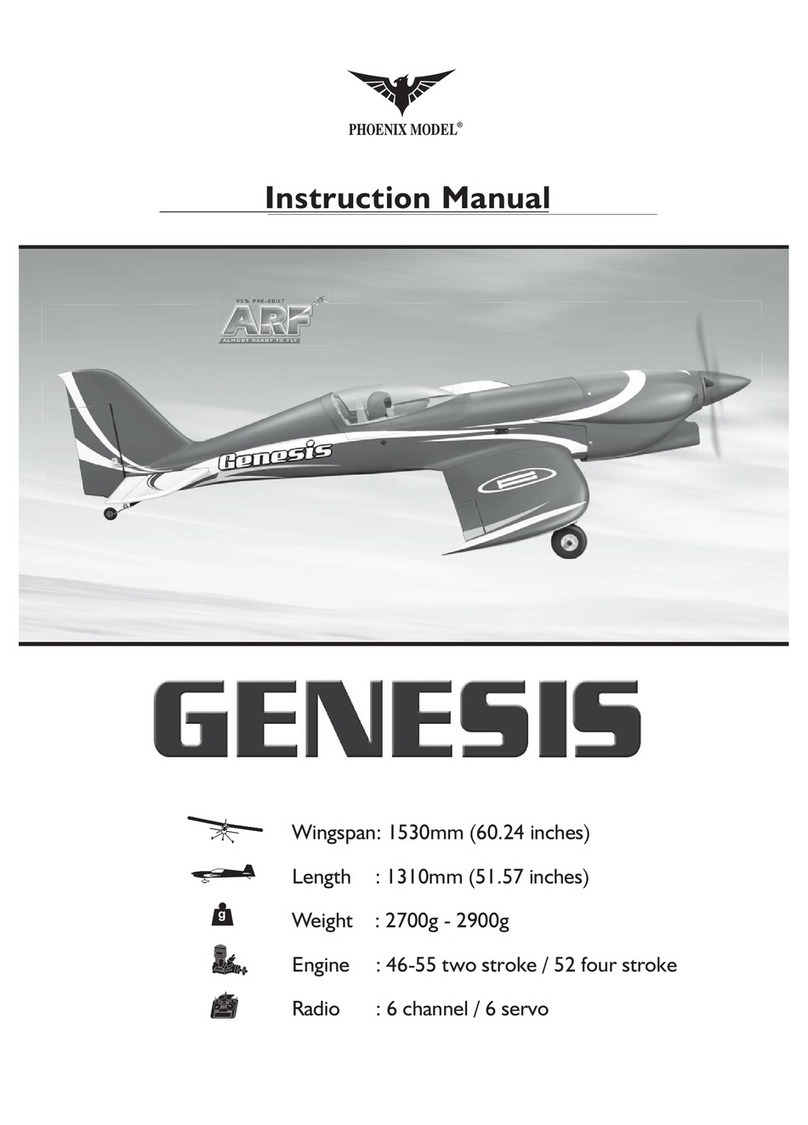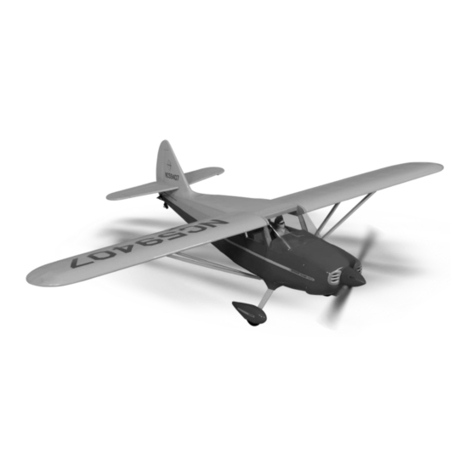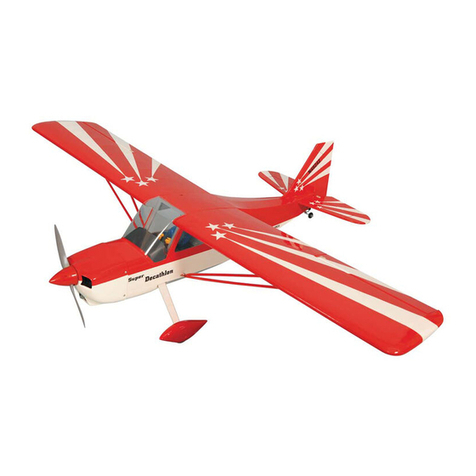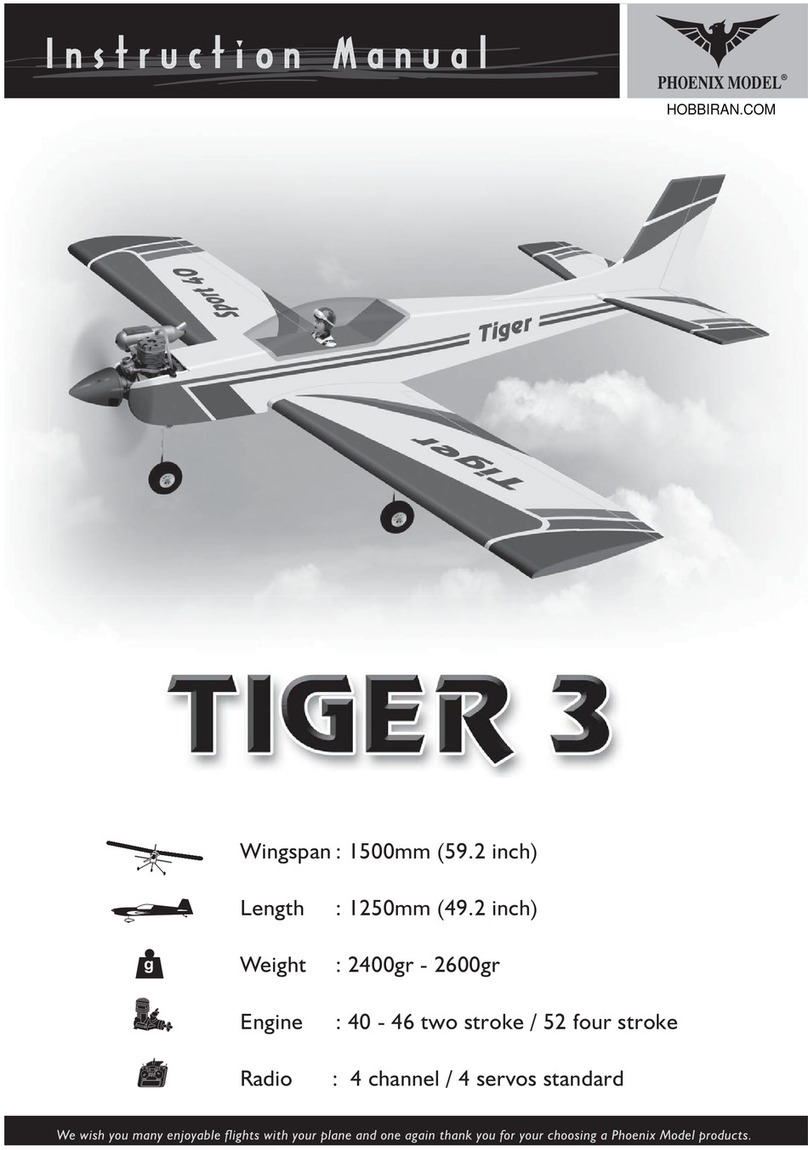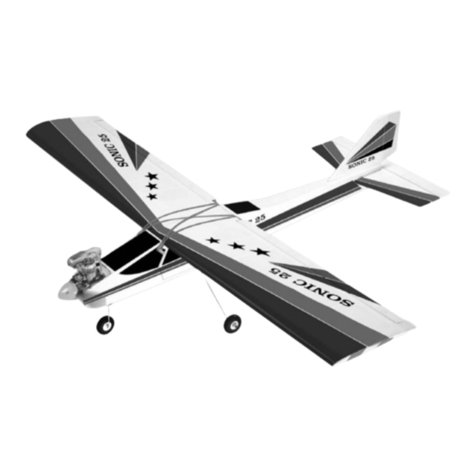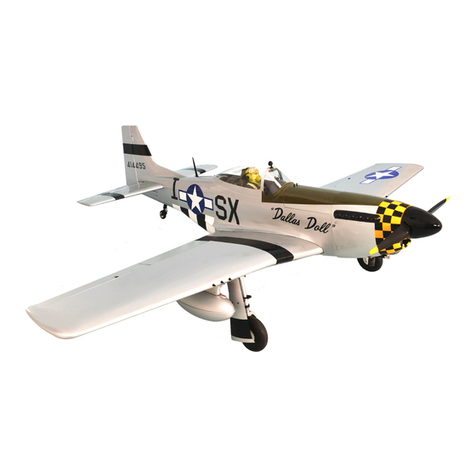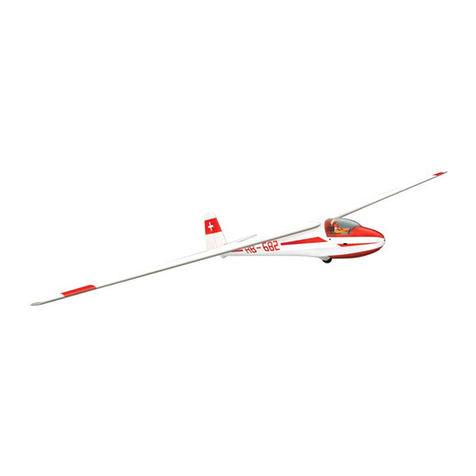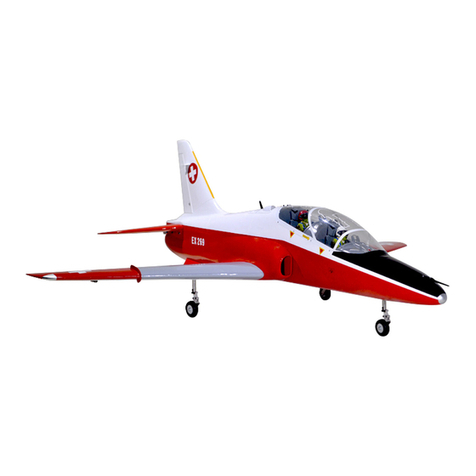
30. When complete add 0.8mm ply end
plates using Superglue to both Ailerons
and Centre Section.
31. Cut slot for aileron control horn. Needs
to snug fit. Roughen surface and
superglue in position AFTER covering.
32. Give wing a final sand using 320 grade
Wet & Dry.
Covering & Finishing
1. The originals were covered in heat
shrink film (Profilm/Oracover). This has
proved more than adequate. Should you
wish to cover in a different material
please take into account any potential
weight penalty that it may incur and
puncture / tear resistance / repairability.
2. Give the complete model a final sanding
with 320 grade Wet & dry. DO NOT use
a sanding block on wing sheeting. It
thins the sheeting on top of the rib and
seriously weakens the wing.
3. Before covering vacuum clean the
model to remove embedded dust to
avoid ‘pimpling’ when covering.
4. Please follow the instruction for the
covering material being used. Normal
procedure is to tack the material at one
end. Tack the other end and then
proceed to gently stretch and tack along
its length before sealing all along the
edges and shrinking with a Heat Gun.
5. Spray motor cowl to match your colour
scheme (rattle can) (Hycote gloss white
is a perfect match for white Profilm).
6. Fit motor using M3 x 12mm countersunk
screws.
7. Fit motor cowl using clear UV resistant
tape and fit propeller.
8. Fit aileron servo output arms in centre
position.
9. Superglue Aileron control horns in
position and hinge Ailerons Sellotape
Diamond or substitute or Oracover.
10. Centre Aileron servos using transmitter
sub-trim and adjust Aileron pushrods.
When satisfied tape servo covers in
place.
11. Fit controls,
hinge
rudder,
carry out
final
adjustment
to elevator neutral and balance the
model including the wings (laterally).
12. Set the control movements as per the
plan i.e. Elevator +/- 10mm. Rudder +/-
30mm. Aileron Up 16mm Down 13mm.
Full up Elevator, Landing Flap1 Down
6mm Landing Flap2 Down 12mm.
Balance point 65mm +/- 5mm from
Leading Edge. Exponential is
recommended for both Aileron and
Elevator controls. Typically 30%.
Landing flap may require elevator
compensation to counteract any pitch
change when deployed. It is
recommended that a pitch change check
is carried out at a safe height!!
13. If using 2.4Ghz R/C equipment it is
recommended that you re-bind / pair the
receiver to update failsafe settings after
set-up and before flying your Pepperpot.
Remember that the throttle control must
be in the LOW throttle position when
binding / paring. Failure to do this has
resulted in a number of serious
accidents in the past. Remember the
Transmitter is first ON and last OFF!
14. Check that when the transmitter is
turned off that motor STOPS.
15. A few simple rules for electrics. In flight it
is normal for the battery / speed
controller (ESC) to get warm but if it gets
hot then the reasons could be
insufficient cooling, too large a propeller
or the battery / ESC of too low a
specification. For the battery it could be
due poor condition, too low a ‘C’ rating
allied to lack of capacity. To avoid
discharging the battery below the
recommended voltage always land when
you notice there is less power on full
throttle. When landing in foliage cut the
throttle immediately to avoid burning out
the speed controller.
Trimming
Trimming is carried out in two stages. The
first stage is to set up the power OFF glide
by adjusting the balance point as required
by moving the battery backwards and
forwards. The second stage is to fine tune
the thrust line of the motor by inserting
washers, as appropriate, between the motor
star plate and the motor mount. To test for
sidethrust put the model in steep climb, into
wind, and note if the model turns to the right
or left as the speed falls off and place
washers as before on the side the model is
turning towards. Downthrust is determined
by the amount of elevator required to
maintain the power on flight path desired.
Some modellers will want the model to go
